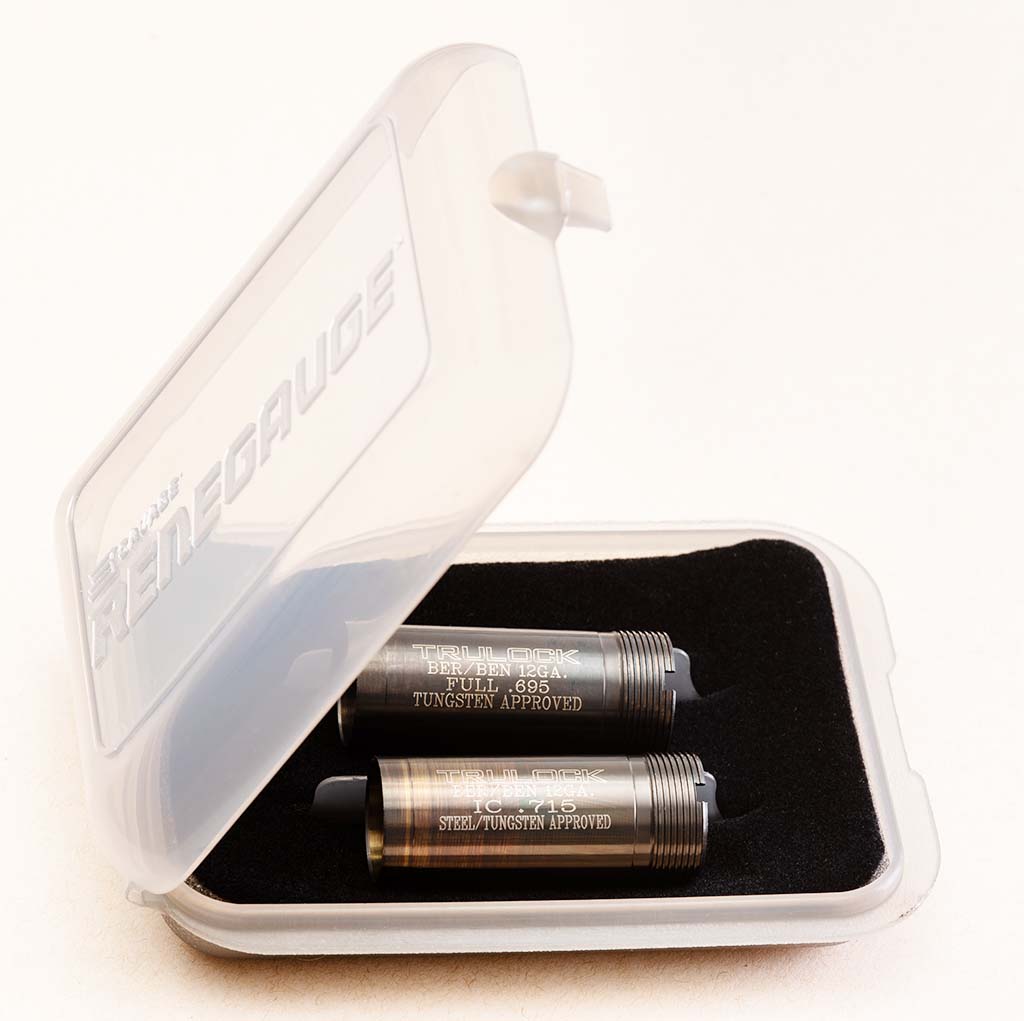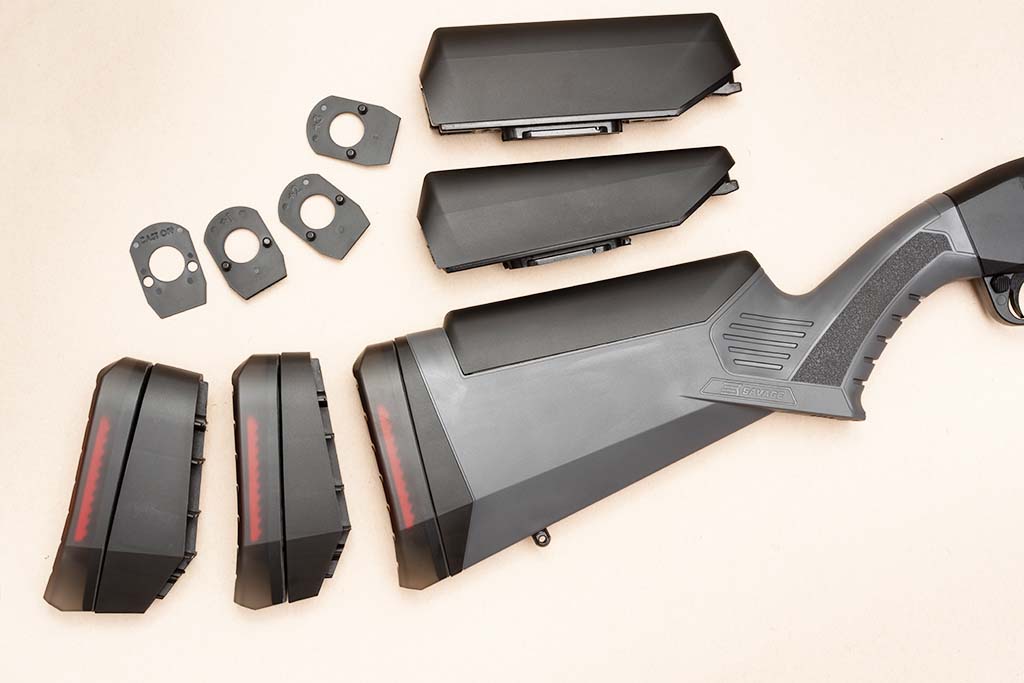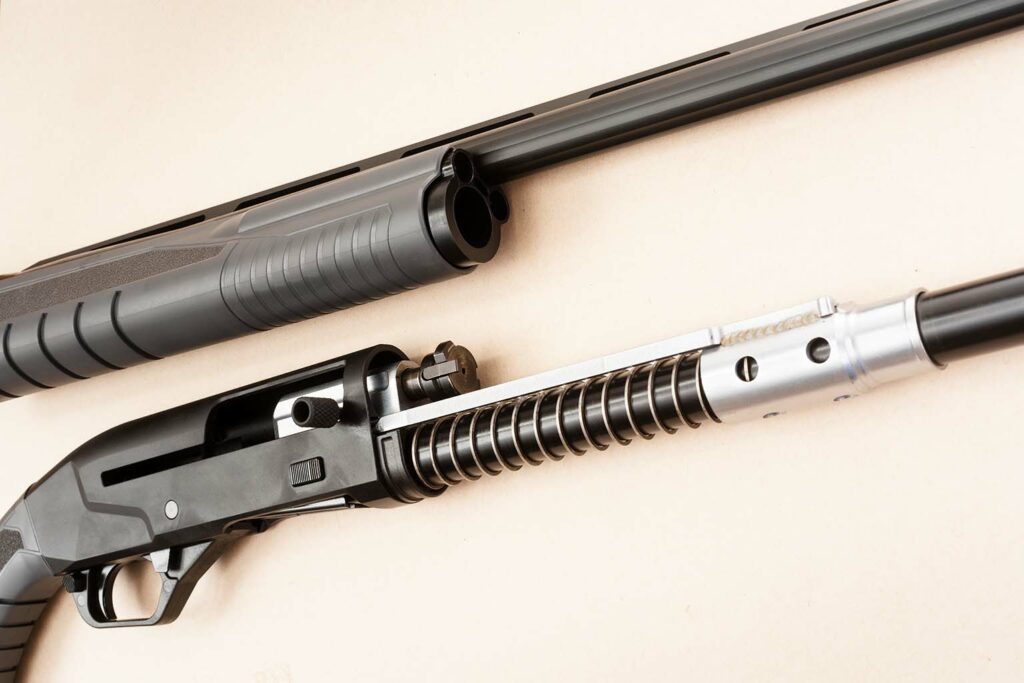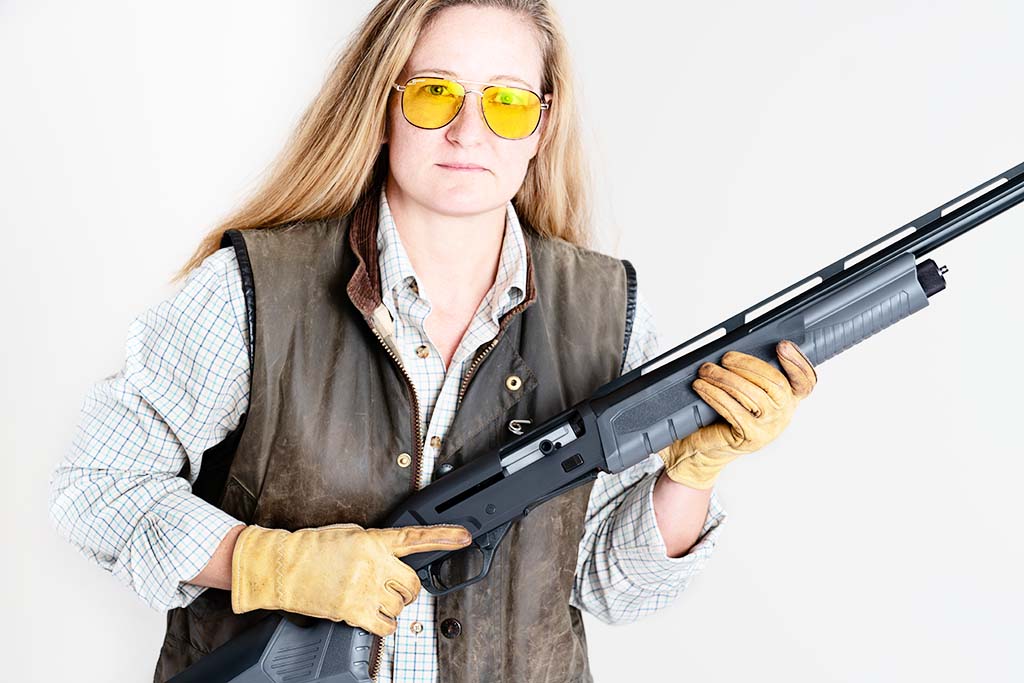By Oleg Volk –
Shotguns are great. They are powerful, fast-handling and offer an instant beaten zone. Unfortunately for recoil-averse shooters like this author, 12-gauge shotguns come in two forms: “too heavy” and “kicks too much!” With a massive, box-fed, autoloading tactical shotgun, I can run reduced recoil loads all day long so long as I don’t have to walk far with it. With a sleek, lightweight field gun, I can venture far and then miss my intended, gave due to flinching at the thought of touching off a heavy hunting load. The Savage Renegauge was designed in response to this contradiction.

Painful felt recoil is comprised of two components: the actual strength and abruptness of the kick and poor fit. Savage endeavored to eliminate both culprits. The gun ships with an impressive array of parts designed to fit it to the individual shooter. Two taller cheekpieces are included to provide correct sight picture—no matter what sighting method is used. Sighting out-of-the-box is with a vent rib and a fiber optic bead. While the horizontal portion of the rib is textured against glare, the ramp at the back of the rib isn’t—it reflects bright sky above quite prominently. Replacing the red fiber optic light pipe with a brighter green one would help bring the front bead into proper prominence, but texturing of that ramp surface would help even more. For the fans of heads-up displays, Evolution Gun Works (EGW) just came out with a Picatinny optic mount compatible with all Renegauge models. So anything from a micro red dot to a holographic sight with a wide window may be employed.
Two longer recoil-absorbing buttpads with spaces are also in the box, providing correct length of pull and very effective recoil reduction. Going even further, Savage includes four cast adjustor plates—plastic spacers that help center the gun within the shooter’s natural stance. All these modification options make it possible to create a “bespoke but factory” firearm, a shotgun with perfect fit for a mass-produced price of a little over $1,000.
The second element of comfortable shooting is minimizing the actual recoil impulse. A long-stroke piston action spreads recoil over a longer time. I’ve seen reviews call it a short-stroke action, but the piston is rigidly laser-welded to the bolt carrier and recoils with it the entire length of the cycle. A patented DRIV (Dual Self-regulating Inline Valve) is a clever way to make the action smoother and less prone to beating the receiver and the shooter’s shoulder alike when heavy loads are fired. Instead of one gas port, the barrel has several to add gas to the piston tube gradually. With light loads, all of the gas is used to drive the piston, with subsequent venting out. With higher pressure ammunition, like 3-inch magnums, the gas pressure forces two valves in the front of the gas block open, venting the excessive pressure out of the front of the forend. This way, light and heavy loads can be mixed in the same tube without any manual regulation required. The system works great for all but the most wimpy promotional ammunition. The rotating bolt has two lugs, so it’s fairly tolerant of a fouled barrel extension.

The Renegauge is a gray 8-pound shotgun with slightly angular forms. It’s also available in three camo patterns and with barrels from 24 to 28 inches. My test gun is gray with a 26-inch tube. The entire design is industrial and purposeful rather than decorative: I don’t have to worry about it rusting from the outside humidity or fret over small scratches in fine walnut furniture. The receiver is aluminum, and all the steel parts feature a Melonite finish. Helpfully, the shotgun comes with sling swivels already installed. Less helpfully, the swivel openings are not the same, with the standard one on the underside of the stock and a smaller one on the front of the magazine tube cap.
The barrel is fluted, unusual for expedient for shotguns. Three Benelli-pattern chokes are supplied with the shotgun: Modified (installed), Improved Cylinder and Full. The key for swapping them is under the foam in the same case. Renegauge comes with an excellent trigger—smooth and around 4 pounds. The push-through safety is in the back of the trigger guard, which this author prefers: I’ve seen more than one accidental discharge from the index finger slipping off the safety placed on the front of the trigger guard.

The magazine holds four shells. A limiter rod is included with the shotgun but isn’t pre-installed. The limited rod is notched for easy trimming to provide various degrees of capacity reduction. At this time, no tube extension is available. Once extended tubes are offered, the smooth-shooting Renegauge would do well in a three-gun competition.

With the Improved Cylinder choke, the Renegauge shot accurately with slugs, easily keeping them on a silhouette at 60 yards. Past that distance, I would need something more than a bead sight, like a HI VIZ adjustable rear sight or a micro red dot. One-ounce Federal Top Gun #7.5 sporting clay shells cycled reliably, and Rio 1 ¼ ounce high-velocity Texas Game loads shot without hurting my shoulder.
Made in America, the Renegauge benefits from better support and likely longer parts availability. Turkish-made shotguns often have problems with parts availability due to undocumented dimensional and design drift over time. All of the controls operate smoothly; all the surfaces are nicely radiused. Overall, the shotgun comes across as well-conceived and an equally well-executed product.
| This article first appeared in Small Arms Review V25N2 (February 2021) |





![[Firearm Review] Hurricane Butterfly’s Crazy Typhoon 12 AOW](https://smallarmsreview.com/wp-content/uploads/2022/11/header-11-75x75.jpg)






